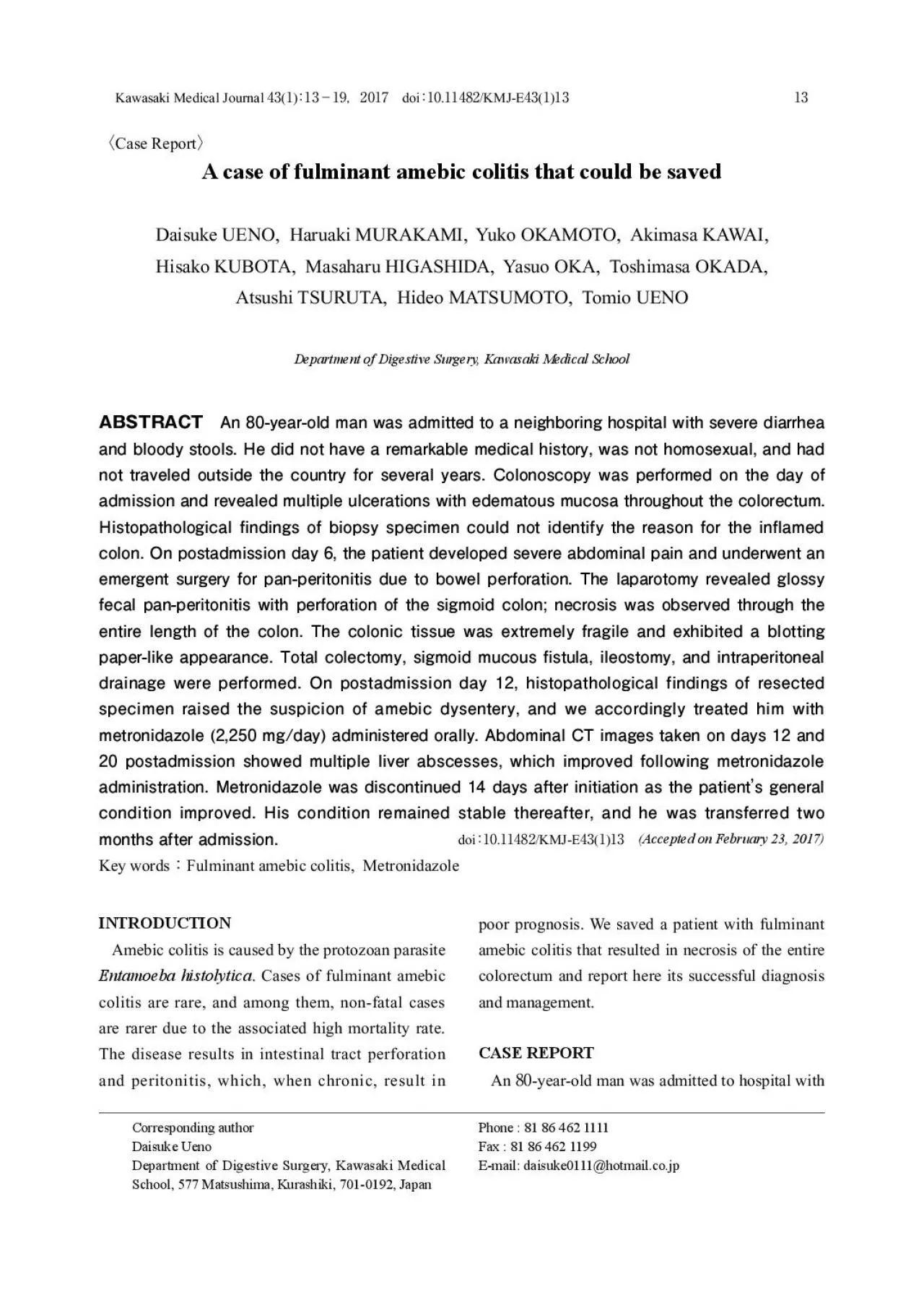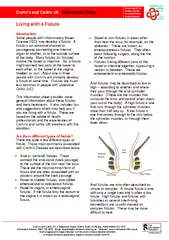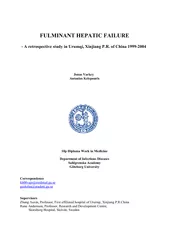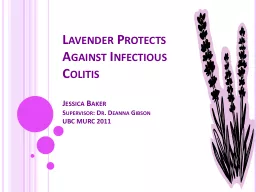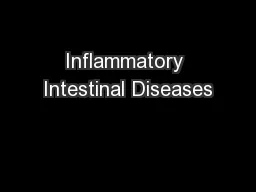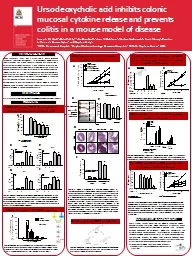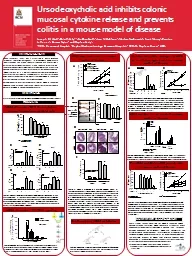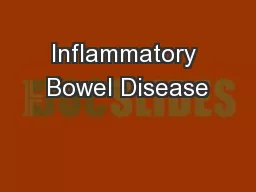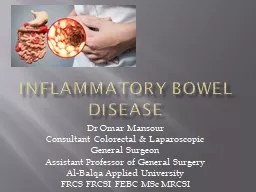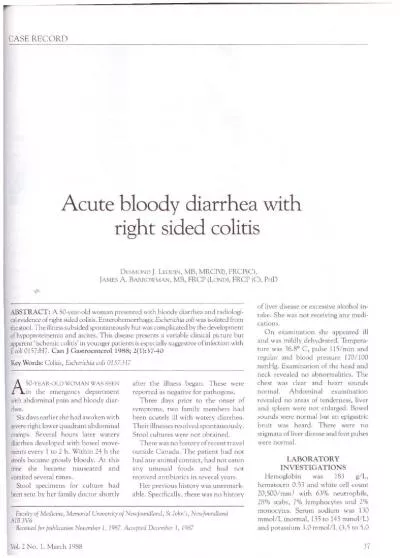PDF-A case of fulminant amebic colitis that could be savedDaisuke UENO H
Author : lam | Published Date : 2022-08-24
Amebic colitis is caused by the protozoan parasite Cases of fulminant amebic colitis are rare and among them nonfatal cases are rarer due to the associated high
Presentation Embed Code
Download Presentation
Download Presentation The PPT/PDF document "A case of fulminant amebic colitis that ..." is the property of its rightful owner. Permission is granted to download and print the materials on this website for personal, non-commercial use only, and to display it on your personal computer provided you do not modify the materials and that you retain all copyright notices contained in the materials. By downloading content from our website, you accept the terms of this agreement.
A case of fulminant amebic colitis that could be savedDaisuke UENO H: Transcript
Download Rules Of Document
"A case of fulminant amebic colitis that could be savedDaisuke UENO H"The content belongs to its owner. You may download and print it for personal use, without modification, and keep all copyright notices. By downloading, you agree to these terms.
Related Documents

